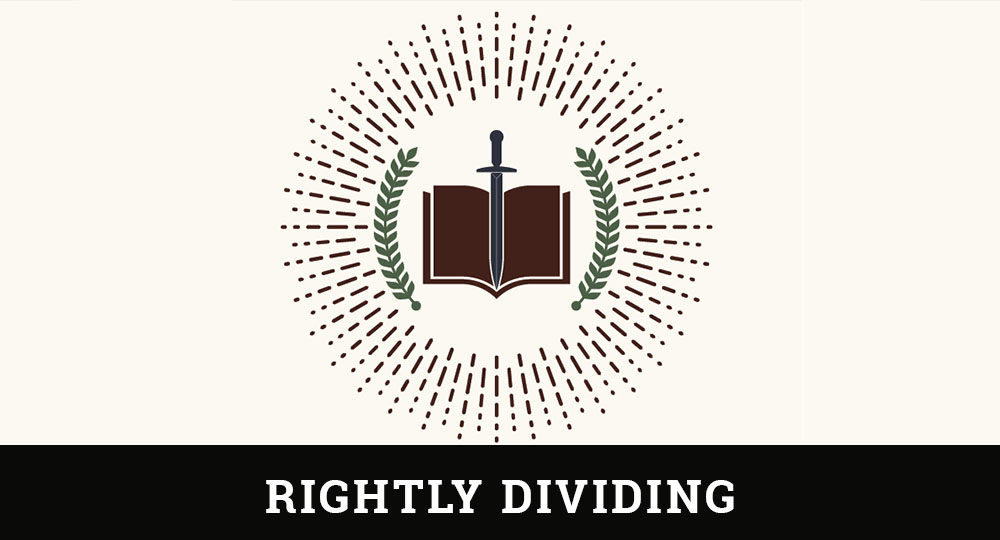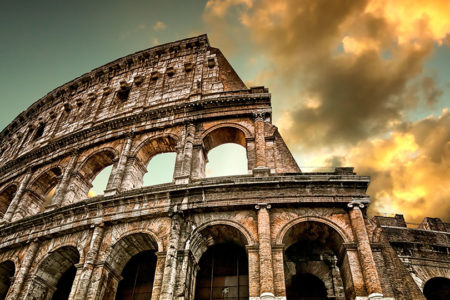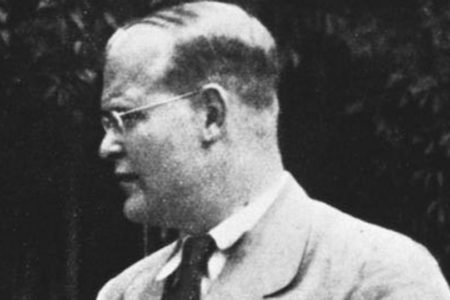Christ’s Second Coming
Revelation 19:11–21
Christ’s Second Coming is a major doctrine throughout the Bible. It is the most dominant theme in the New Testament, next to the subject of faith. Christ’s return, put simply, is the personal, physical, visible return of the Lord to the earth in resplendent glory.
There are some astounding statistics regarding the frequent mention of Christ’s Second Coming in Scripture. One-fifth of the Bible is prophecy; one-third of those prophecies relate in some way to Christ’s Second Coming. There are at least 333 prophecies concerning Christ in the Old Testament. Only 109 were fulfilled in His first advent, leaving 224—twice as many—to be fulfilled at His second advent. Of the 46 Old Testament prophets, less than ten speak of events in Christ’s First Coming, while 36 speak of events connected with His Second Coming. There are 7,959 verses in the New Testament, of which 330 refer directly to the Second Coming. The Lord refers to His return 25 times. Throughout the New Testament, there are more than 50 exhortations for people to be ready for Christ’s return (John MacArthur, Jr., The Second Coming of the Lord Jesus Christ, p. 1).
Often the Rapture of the church is referred to as Christ’s Second Coming. It is important to understand that the Rapture of the church and the Second Coming are separate events. The Rapture is imminent; no prophecy must yet be fulfilled for this event to occur. The Rapture will take place at least seven years before Christ’s Second Coming. In the Rapture, the church will be caught up to meet the Lord in the air and go to live in heaven (Jn. 14:1–3; 1 Cor. 15:51–52; 1 Th. 4:13–18). Christ’s Second Coming will not take place until after the seven years of the Tribulation have been completed on the earth. Then He will return from heaven with His church to rule and reign on the earth for a thousand years.
Christ’s Coming Revealed
John wrote, “And I saw heaven opened and, behold, a white horse…” (v. 11). In chapter 4, the apostle saw a door open in heaven, but in this passage he sees all of heaven open. What a revealing contrast to Christ’s first advent! At His First Coming, Christ rode into Jerusalem in a lowly state, sitting on a colt, the foal of a donkey. He was given no throne, only a cross; His crown was thorns; His scepter was a reed. But here, the Lord is seated on a white horse ready for His departure from heaven as a Warrior-King. He is poised in battle array, coming “in righteousness [to] judge and make war” (v. 11) against the Antichrist, the False Prophet, and all who follow them.
Throughout this age of grace, the world has scoffed at the possibility of Christ’s return. Christ has held back His righteous indignation on such indifference, giving people time to “come to repentance” (2 Pet. 3:9). He has allowed wickedness to run its course, but, in chapter 19, the cup of sin is full. It is time to judge the rulers of darkness and reclaim planet Earth from Satan’s grip. When He comes in the clouds, “every eye shall see him, and they also who pierced him; and all kindreds of the earth shall wail because of him” (1:7).
Christ’s coming on a white horse will symbolize His glorious victory over God’s enemies. In biblical times, Roman generals always returned from victorious campaigns riding white horses. They and their legions would parade up the Via Sacra—the main street of Rome that led from the Forum to the Temple of Jupiter on the Capitoline Hill—mounted on white horses to the jubilant cheers of the people (John F. Walvoord, The Revelation of Jesus Christ, p. 274). It should be noted that the Antichrist will come on a white horse (6:2). He will carry a bow without arrows, suggesting that he will conquer by peaceful means during the first half of the Tribulation. He will wear a victor’s crown as the world leader, but his deceptive and demonic reign will mark him as a counterfeit. His reign will last only 42 months because Christ will destroy him at His Second Coming.
Christ’s Characteristics Reviewed
Christ is described by a number of titles at His return. First, He is called “Faithful” (v. 11), meaning trustworthy or one who can be relied upon. He is faithful to keep all of His promises. Jesus said, “Heaven and earth shall pass away, but my words shall not pass away” (Mt. 24:35). Second, He is “True” (v. 11)—that is, genuine or real compared to that which is false. He promised to bring peace and social and political justice to mankind, and He will perfectly deliver what He has promised. The rider of Revelation 6:2 is the exact opposite; he is dangerously deceptive and dishonest. Third, “he had a name written, that no man knew, but he himself” (v. 12). It seems that John was able to see the name, possibly written on Christ’s garments, but it was incomprehensible to him, shrouded in mystery. Fourth, He is called “The Word of God” (v. 13). Christ is the eternal Word who became flesh and dwelt among mankind (Jn. 1:1, 14). He is the complete personal manifestation of God and the full and final revelation of God. He who spoke the universe into existence will, at His Second Coming, destroy the beast and his empire by the Word of His mouth. Fifth, He has a name written on His vesture: “king of kings, and lord of lords” (v. 16). This title is a summation of His rightful claim to reign and rule over all of creation in absolute sovereignty.
John described Christ’s appearance at His return. “His eyes were like a flame of fire” (v. 12), indicating a penetrating gaze that flashed with intelligence, righteousness, and the look of divine wrath upon the wicked. His eyes will accurately expose and exterminate all unrighteousness (cp. 1:14; 2:18).
Christ will wear “many crowns” (v. 12) on His head, denoting His royalty and majestic position as sovereign King of kings over heaven and earth.
Christ’s Retribution
Armies will accompany Christ at His return. “And the armies that were in heaven followed him upon white horses, clothed in fine linen, white and clean” (v. 14). The armies will include the holy angels (Mt. 25:31), church saints (v. 8), Old Testament believers (Jude 14–15; Dan. 12:1–2), and Tribulation saints martyred for their faith (7:13–14; 20:4). They will return with Christ in their glorified bodies. The “fine linen, clean and white” symbolizes Christ’s righteousness produced in the inner life and character of believers (v. 8).
Upon seeing Christ appear, “the beast, and the kings of the earth, and their armies, [will gather] together to make war against him…and against his army” (v. 19; cp. Ps. 2:2). “Out of his mouth goeth a sharp sword, that with it he should smite the nations” (v. 15). The sword is more like a javelin, which is large, long, thin, and light enough to be thrown like a spear. The sword is symbolic, referring to Christ’s Word that proceeds from His mouth. Christ, as the Warrior-King, will simply speak and consume the Antichrist and his army with the Word of His mouth (2 Th. 2:8).
His “vesture [is] dipped in blood” (v. 13). This is not His own blood, shed on the cross, but the blood of His enemies. First, His garments will become blood spattered when He delivers a remnant of Israelis living in Bozrah, who will flee to the land of Edom and hide in Bozrah to escape the wrath of the Antichrist (Isa. 63:1–6). Second, His garments will become blood spattered when He destroys the armies at Armageddon (v. 15; cp. 14:14–20). In contrast, the garments of His armies will not be stained with blood. Christ alone will fight and gain this victory.
After the avenging Lord smites the nations, “he shall rule them with a rod of iron” (v. 15). His rule over the nations will be unyielding and in total authority, demanding that every nation conform to His righteous standards. Lawlessness will be handled swiftly and justly, producing continued peace throughout the world. The word rod means to shepherd. The shepherd uses his rod to bring correction and comfort to sheep (Ps. 23:4). Here the rod is made of iron and will be used to conform the world to order and justice and to put down all manifestation of wickedness. Christ is the “good shepherd” (Jn. 10:11), the “great Shepherd” (Heb. 13:20), and the “chief Shepherd” (1 Pet. 5:4) who will rule the world through those returning with Him.
Christ’s destruction of the armies is further described: “and he treadeth the winepress of the fierceness and wrath of Almighty God” (v. 15). This imagery portrays grapes being trampled under foot until all the juice is squeezed out of them. Here blood, not grape juice, will spurt from the winepress of God’s wrath (cp. 14:14–20). The soldiers’ flesh will “consume” (Zech. 14:12) from their bodies while they are still standing. The word consume means to rot and has the idea of wasting away, as does the flesh of a leper. At Armageddon, the flesh will rot away at the Word of the Lord, falling instantly from the victims’ bodies to the ground while they are still standing.
Christ’s Conquest Realized
John “saw an angel standing in the sun; and he cried with a loud voice, saying to all the fowls that fly in the midst of heaven, Come and gather yourselves together unto the supper of the great God” (v. 17). The word fowl is not the general word for bird but speaks of an eagle or a vulture. Vultures are voracious eaters who descend swiftly upon carrion and devour it in minutes. Their task is to eat the “flesh of kings…captains…mighty men…horses and…all men…free and enslaved…small and great” (v. 18). The army of the Antichrist will include all classes of people who will be totally consumed by the vultures. Seeing these ugly birds feed on the decaying carcasses of millions of men in a 200-mile radius of Jerusalem will be a terrifying spectacle beyond human imagination. What a contrast between the two suppers mentioned in this chapter. At the first supper, believers are called to rejoice and feast with Christ in heaven (v. 7). At the second supper, unbelievers will be made the meal of scavenging birds (vv. 17–18).
The final destiny of this Satanic confederacy is certain: “And the beast was taken, and with him the false prophet…and them that worshiped his image. These both were cast alive into a lake of fire burning with brimstone” (v. 20). Dr. Harry Ironside wrote, “A thousand years later they are still said to be suffering the vengeance of eternal fire, thus incidentally proving that the lake of fire is not annihilation, and that it is not purgatorial either, for it neither annihilates nor purifies these two fallen foes of God and man after a thousand years under judgment. The lake of fire differs from the abode of Satan, in that, the abode is only temporary, the lake of fire is their final eternal destiny” (H. A. Ironside, Revelation, p. 330). More will be said about the Lake of Fire in the next issue.
John concluded the description of the Lord’s Second Coming by relating what will happen to the survivors of the Great Tribulation who followed the Antichrist. “And the remnant were slain with the sword of him that sat upon the horse, which sword proceeded out of his mouth; and all the fowls were filled with their flesh” (v. 21).
After Christ returns, He will judge the nations. Those who are righteous will enter the kingdom prepared for them from the foundation of the world. The wicked survivors of the Great Tribulation, who followed the Antichrist, will be condemned to death and destined to spend eternity in the everlasting fire prepared for the devil and his angels (Mt. 25:31–46).
After the Lord has completed this judgment, He will establish His Millennial Kingdom on the earth. Those returning with Him will be made priests of God and will reign with Him in the Millennial Kingdom.







#AMAZING!!! #ThankYouForSharing!!!